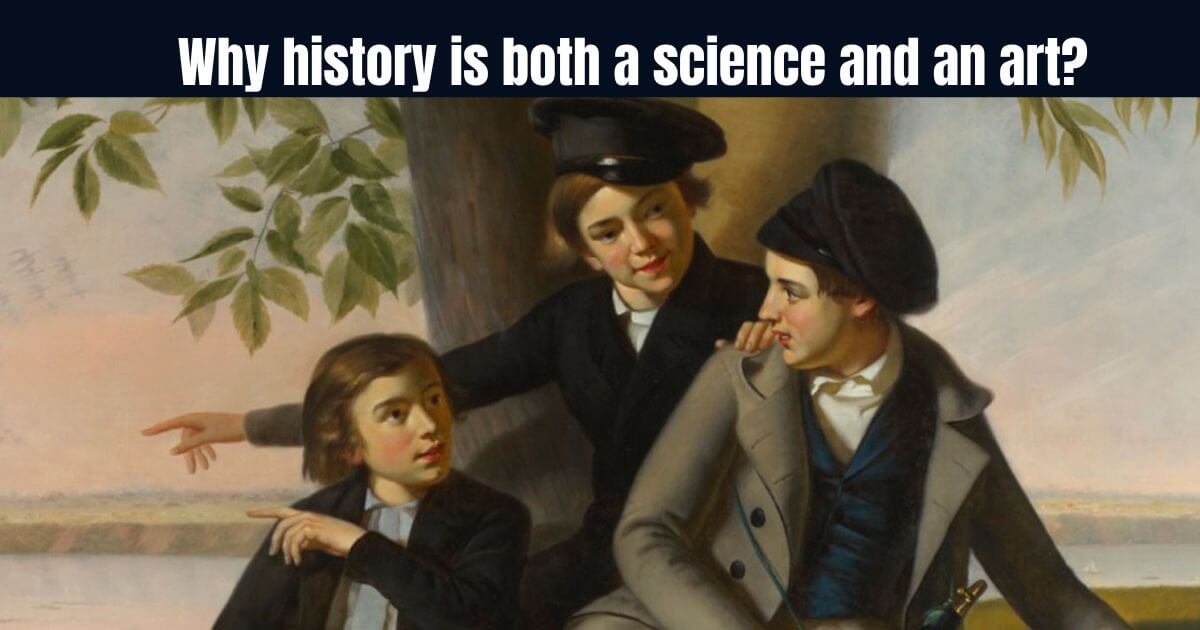I do complete research to find out the question of the answer Why history is both a science and an art. Below, I share my quick response.
The study of history lies at the intersection of the humanities and the social sciences. History is a mere collection of past events and a discipline involving science and art. While some may argue that history is purely an art or a science, the truth is that it is a combination of both.
The Argument for History as a Science
The argument for history as a science has debated for centuries, dating back to the time of the ancient Greeks. While the idea was popularized by the historian Carl Becker in the early 20th century, there are still good arguments to be made for both sides of the debate. However, at its core, history is the study of the past. The examination and interpretation of events have shaped the world we live in today. This article will delve deeper into the argument for history as a science and provide evidence to support our position.
Systematic Approach
It is essential to understand what science is. Science is a systematic approach to the acquisition of knowledge. It involves the observation of natural phenomena, the formulation of hypotheses, and the testing of those hypotheses through experiments and other methods. Science aims to uncover the underlying principles that govern the natural world.
Similarly, the study of history involves a systematic approach to the acquisition of knowledge. Historians observe historical events, formulate hypotheses about what caused those events, and evaluate those hypotheses by analyzing primary and secondary sources. History aims to understand the past and how it has shaped the present.
While some argue that history cannot be a science because it deals with events that cannot be replicated, this argument is flawed. While it is true that historical events cannot reproduce in a laboratory setting, neither can many natural phenomena that are studied by science. For example, astronomers cannot replicate the formation of stars in a laboratory, yet they can still learn the principles that govern this process through observation and analysis.
Methodology
History has a rigorous methodology that is like that of science. Historians use various methods to gather evidence, including interviews and primary and secondary sources. They then analyze this evidence using multiple techniques, including statistical and textual analyses. This methodology ensures that historical claims are based on evidence rather than speculation.
Furthermore, the study of history has contributed to the development of other scientific disciplines. For example, studying history has contributed to the development of archaeology, which uses similar methods to explore past cultures and civilizations. Additionally, studying history has contributed to the development of sociology and anthropology, which seek to understand human behavior and culture.
The Argument for History as an Art
Art and history are two corresponding fields that study together. Through art, people can understand the historical and cultural context of a particular time and place. However, it is essential to approach art historical analysis correctly to understand its meaning and significance fully.
One way to analyze art is through contextual analysis, which interprets the subject matter. Iconographic research is another method of decoding an artwork’s meaning by examining its symbolism and visual elements.
It is a genre of art that seeks to describe significant historical events or moments from popular mythology and literature. However, artists who depict historical events or personages are often influenced by the art market, the general public, or the patron who commissions the work. It means the accuracy of historical events depicted in the artwork is only sometimes guaranteed.
Events
Studying history through art is a way to understand the artist’s ability to represent historical events or personages accurately. In an art history class, students are often required to write a formal or stylistic analysis of an artwork. This analysis involves analyzing the form and design of the painting.
There is a debate over whether history is an art or a science. Historicism, which emerged in the early 19th century, is the philosophy that ignited the discussion. Before historicism, history was viewed as a branch of literature. However, historicism introduced a shift away from literature and towards the scientific study of history.
Arthur Danto’s essay, “The End of Art,” explores the relationship between history, progress, and art theory. Danto suggests that the end of art is a sign of progress in society, as it indicates that art has fulfilled its purpose of reflecting culture.
Art can be rooted in history and a cultural change catalyst. As a representation of culture, art reflects the values, beliefs, and societal norms of a particular time and place. The Art Story guides understanding and enjoying the best visual arts, including artists, art movements, and artistic directions. Read about Anime AI Art Generator.
The Art History Department suggests beginning with a visual analysis of the artwork to write an influential art history paper. This analysis involves examining the form and design of the painting and discussing its meaning and significance in the context of the historical and cultural context in which it was created.



